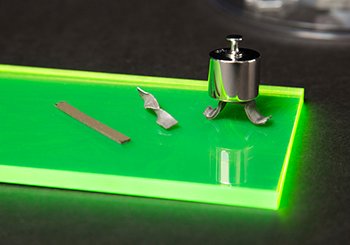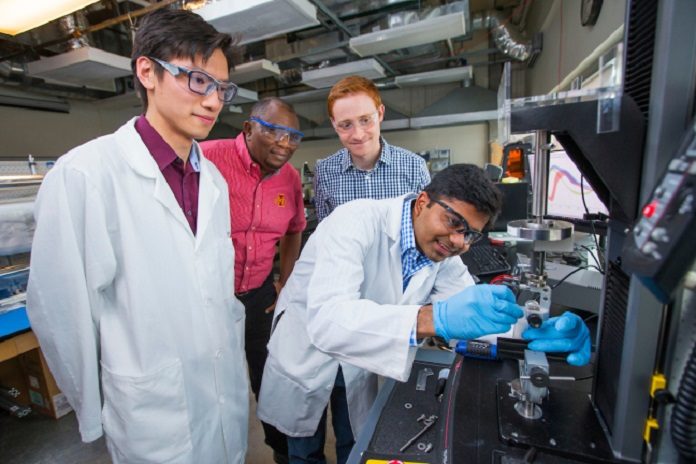The Iowa State engineers invented a novel responsive and smart material that can stiffen up like a worked-out muscle. This material has to arrest characteristic as on stressing a muscle it gets stronger. Engineers said mechanically stress the rubbery material, say with a twist or a bend, and the material automatically stiffens by up to 300 percent.
In lab tests, mechanical stresses transformed a flexible strip of the material into a hard composite that can support 50 times its own weight.
This new composite material doesn’t require outside energy sources such as heat, light or electricity to alter its properties. As well it could be utilized in several ways, including applications in medicine and industry.
Development of the material combined Thuo’s expertise in micro-sized, liquid-metal particles with Bartlett’s expertise in soft materials such as rubbers, plastics, and gels.
It’s a powerful amalgamation. The material is described in a paper recently published online by the scientific journal Materials Horizons.
The researchers discovered a simple, low-cost way to produce particles of undercooled metal – that’s metal that remains liquid even below its melting temperature. The modest particles (they’re just 1 to 20 millionths of a meter across) are formed by exposing droplets of melted metal to oxygen, creating an oxidation layer that coats the droplets and stops the liquid metal from turning solid.
They likewise discovered ways to blend the liquid-metal particles with a rubbery elastomer material without breaking the particles.
When this hybrid material is subject to mechanical stresses like pushing, twisting, bending, squeezing, the liquid-metal particles break open. The liquid metal flows out of the oxide shell, fuses with each other and solidifies.
Martin Thuo Iowa State assistant professor of materials science and engineering said, “You can squeeze these particles just like a balloon. When they pop, that’s what makes the metal flow and solidify.”
Michael Bartlett, Iowa State assistant professor of materials science and engineering said, the result, is a “metal mesh that forms inside the material.”

Thuo and Bartlett said the popping point can be tuned to make the liquid metal flow after varying amounts of mechanical stress. Tuning could involve changing the metal used, changing the particle sizes or changing the soft material.
In this case, the liquid-metal particles contain Field’s metal, an alloy of bismuth, indium, and tin. But Thuo said other metals will work, too.
He added, “The idea is that no matter what metal you can get to undercool, you’ll get the same behavior.”
The engineers say the new material could be used in medicine to support delicate tissues or in an industry to protect valuable sensors. There could likewise be utilized in soft and bio-inspired robotics or reconfigurable and wearable electronics.
Bartlett said, “A device with this material can flex up to a certain amount of load. But if you continue stressing it, the elastomer will stiffen and stop or slow down these forces.”
Engineers lastly cleared, that is how they’re putting some muscle in their new smart material.
